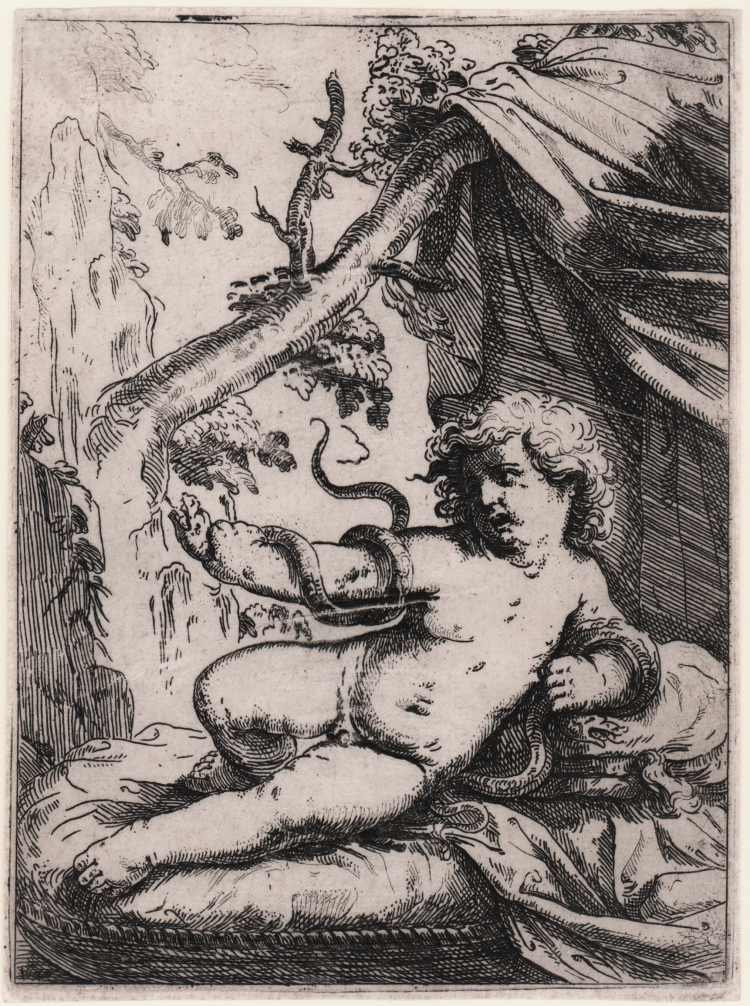




| Reference: | S17223 |
| Author | Lorenzo LOLI |
| Year: | 1640 ca. |
| Measures: | 140 x 180 mm |



| Reference: | S17223 |
| Author | Lorenzo LOLI |
| Year: | 1640 ca. |
| Measures: | 140 x 180 mm |
The infant Hercules in his cradle, strangling the snake.
Etching, circa 1640, without signature.
A fine impression on contemporary paper, with small margins, showing trace of paper folds, in very good conditions.
From the set of Scherzi di putti, after Giovanni Andrea Sirani.
The painter and etcher, Lorenzo Loli, was taught by Guido Reni and Andrea Sirani. Several of his altarpieces and paintings on religious themes have been preserved in his native city of Bologna. Loli was a typical representative of Emilian Baroque painting and one of the best Bolognese painter-etchers of the Seicento.
Bibliografia
Bartsch 24.
Lorenzo LOLI (Bologna 1612 – 1691)
|
Although he is better known as engraver instead of painter, Loli was scholar of Guido Reni and he followed his master’s style in the choice of his subjects. Moreover, the way they worked their etchings was really peculiar: the stroke was clean and precise, perfectly calibrated, and really suitable for his classicist compositions. His graphic repertoire is actually wide; Bartsch catalogues twenty-five works, underlining in some cases the unperfect mordant of the plate. His subjects were taken from Reni’s production and that of his scholars, especially from Giovanni Andrea Sirani.
Although Loli’s production was mainly the result of imitation, this testifies the great importance that Reni’s style had in Bologna in the XVII century and it also act as an intermediary for its circulation.
|
Lorenzo LOLI (Bologna 1612 – 1691)
|
Although he is better known as engraver instead of painter, Loli was scholar of Guido Reni and he followed his master’s style in the choice of his subjects. Moreover, the way they worked their etchings was really peculiar: the stroke was clean and precise, perfectly calibrated, and really suitable for his classicist compositions. His graphic repertoire is actually wide; Bartsch catalogues twenty-five works, underlining in some cases the unperfect mordant of the plate. His subjects were taken from Reni’s production and that of his scholars, especially from Giovanni Andrea Sirani.
Although Loli’s production was mainly the result of imitation, this testifies the great importance that Reni’s style had in Bologna in the XVII century and it also act as an intermediary for its circulation.
|